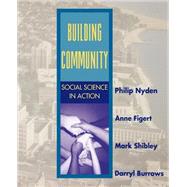
Note: Supplemental materials are not guaranteed with Rental or Used book purchases.
Purchase Benefits
What is included with this book?
| Preface | xvii | (4) | |||
| Forewords | xxi | ||||
| Introduction | 1 | (2) | |||
| Why Collaborate and Models of How To | 1 | (2) | |||
|
3 | (11) | |||
|
14 | (15) | |||
| Part I Racial, Ethnic, and Economic Diversity: Pipe Dream of the Politically Correct or Are There Working Models? | 29 | (36) | |||
|
32 | (10) | |||
|
|||||
|
|||||
|
|||||
|
42 | (5) | |||
|
|||||
|
|||||
|
|||||
|
|||||
|
|||||
|
47 | (5) | |||
|
|||||
|
52 | (6) | |||
|
|||||
|
|||||
|
58 | (7) | |||
|
|||||
|
|||||
| Part II Whose Environment, Whose Problem? Collaborative Research Is Changing the Environmental Movement | 65 | (38) | |||
|
67 | (7) | |||
|
|||||
|
74 | (5) | |||
|
|||||
|
79 | (6) | |||
|
|||||
|
85 | (7) | |||
|
|||||
|
|||||
|
92 | (6) | |||
|
|||||
|
98 | (5) | |||
|
|||||
| Part III New Models for Community-Based Research and Learning | 103 | (48) | |||
|
105 | (7) | |||
|
|||||
|
|||||
|
|||||
|
|||||
|
112 | (8) | |||
|
|||||
|
|||||
|
120 | (9) | |||
|
|||||
|
|||||
|
|||||
|
129 | (6) | |||
|
|||||
|
|||||
|
135 | (6) | |||
|
|||||
|
141 | (10) | |||
|
|||||
|
|||||
| Part IV Health Issues Are Social Issues | 151 | (48) | |||
|
154 | (7) | |||
|
|||||
|
|||||
|
161 | (8) | |||
|
|||||
|
|||||
|
|||||
|
|||||
|
169 | (8) | |||
|
|||||
|
|||||
|
|||||
|
177 | (13) | |||
|
|||||
|
|||||
|
|||||
|
190 | (9) | |||
|
|||||
|
|||||
| Part V Community Control and Voice | 199 | (44) | |||
|
202 | (9) | |||
|
|||||
|
211 | (8) | |||
|
|||||
|
|||||
|
219 | (7) | |||
|
|||||
|
226 | (7) | |||
|
|||||
|
|||||
|
|||||
|
233 | (7) | |||
|
|||||
|
240 | (3) | |||
| Appendix | 243 | (7) | |||
| References | 250 | (7) | |||
| Index | 257 |
The New copy of this book will include any supplemental materials advertised. Please check the title of the book to determine if it should include any access cards, study guides, lab manuals, CDs, etc.
The Used, Rental and eBook copies of this book are not guaranteed to include any supplemental materials. Typically, only the book itself is included. This is true even if the title states it includes any access cards, study guides, lab manuals, CDs, etc.